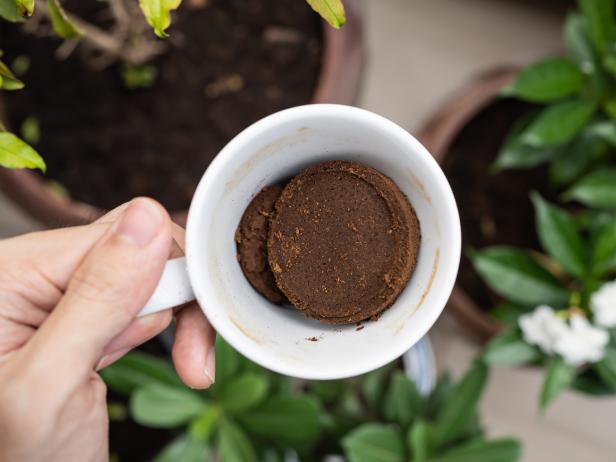Hold onto those eggshells. You don’t have to waste money on expensive fertilizers with these effective homemade solutions.
Fertilizer plays an important role in a plant’s life; especially garden plants that produce food. Nicknamed “plant food” for a reason, fertilizers provide your plants with all the nutrients they need to not only survive, but thrive.
When your plants receive the nutrients they require, they’ll put forth more vibrant colors, and stronger stems, increase crop production and flavor, and put forth healthier foliage while growing faster.
N-P-K (Nitrogen, Phosphorous, Potassium) is to plants as fats, carbs and protein are to humans; they all play a special role in our health. With the right balance of plant food, and meeting their evergreen needs, your garden plants will be bursting with crops and flavor.
To best understand your soil’s nutritional profile and to know what nutrients it may be lacking (or have too much of), contact the major university in your state and request a soil test. They are inexpensive (between $5 to $20) and take all of the guesswork out of the fertilization process.
Then you’ll be equipped with all the correct information regarding your plants’ needs, and from there, can choose the best fertilizer method for your plant’s individual needs.

Wachiwit/Getty Images
Coffee Grounds, Cinnamon and Club Soda
The combination of this homemade plant food contains NPK (plus other minerals) and takes no time to put together. You’ll need four to six tablespoons of coffee grounds, one teaspoon of cinnamon and one cup of club soda. Simply mix the ingredients until well combined and use on a bi-weekly basis for a slow release of nutrients without causing the soil’s acidity levels to rise too much.
Epsom Salt
This inexpensive but powerful household item is equipped with vital plant nutrients: magnesium and sulfate. Without magnesium, plants cannot capture the sun’s energy. Magnesium-loving plants such as tomatoes thrive with proper magnesium levels as it helps stabilize the soil and maintains the pH of the soil.
For this one, simply mix one tablespoon of Epsom salt with one gallon of water until the salt dissolves in the water. Add the solution to a watering can and water the soil thoroughly.
You can make your own Foliar spray by following the instructions above and placing the solution in a spray bottle or pump sprayer and misting your plant’s leaves. The nutrients will be absorbed directly through the plant’s leaves and may help protect against pests. When spraying the leaves, make sure you apply the fertilizer early in the morning before they are in direct sunlight.
Coffee Grounds
Don’t toss your coffee grounds away; share some Joe with your beloved plants. Coffee grounds are rich in much-needed nutrients such as nitrogen, magnesium and potassium. They’re perfect for acid-loving plants like blueberries, radishes, peppers, parsley, sweet corn, cucumbers, beans, broccoli, cranberries, huckleberries, cauliflower, tomatoes, celery, onions, squash and more.
Evenly sprinkly four to six tablespoons of coffee grounds on top of your soil, a few inches away from the base of your plants, and gently work them in.
Coffee grounds sprinkle more evenly when they are dried. To accomplish this, line a cookie sheet with newspaper and allow your coffee grounds to dry completely.
Cool Fireplace Ashes
Fireplace ash is rich in calcium carbonate and potassium. If your soil is too acidic, this will help balance the acidity levels out. This is an example of why acquiring a soil test is important; you’ll know how to create the perfect balance for your plants both nutritionally and understand their preferred pH balance.
To make this one, simply wait for the ashes to cool down completely, and lightly sprinkle them over the top of the plant’s soil.
There is no nitrogen present in ashes so be sure to add a nitrogen solution to your plants if needed.
Eggshells
Agricultural lime is a product often used in gardens as it contains calcium, a much-needed nutrient for plants. Instead of heading to the store, save your eggshells post-breakfast, and incorporate them into your soil. This will provide them with the calcium carbonate they need.
To make this fertilizer, place eggshells in a blender and pulse until they become powdery-fine. Sprinkle the eggshell powder on the surface of your soil, and lightly scratch it in. This method causes a slow release of calcium.
For faster absorption of calcium, lightly break the eggs shells up into small pieces. Place them in the oven at 350 degrees Fahrenheit until they are toasty brown and then soak the eggshells in a jar filled with vinegar. For every one-part eggshell, use nine parts vinegar.
Let the solution sit for four weeks in a cool dry area (under the sink works great!). You will notice some eggshells floating to the top of your jar as well as some bubbling and fizzing taking place; that’s all normal. Remove the lid once per day to let the natural gas out of the jar.
When the solution is ready, at the four-week mark, strain the undissolved particles through a strainer, then dilute the solution in water with a ratio of two tablespoons per liter of water.
Apply the solution by spraying it directly onto the leaves, covering them completely.
Comfrey Tea
Comfrey is an incredible plant and is one of the easiest to grow. As a perennial herb, it can be chopped down and used for plant fertilizer and it will grow back beautifully to be used again, three to four times a year.
To make it, start with a five-gallon bucket and place as many Comfrey leaves into the bucket as you can fit. Place a brick, rock or something heavy on top of the leaves in the bucket and close the lid.
After about four to six weeks (check regularly), the leaves should have broken down into a thick, black liquid. Dilute two tablespoons of comfrey fertilizer per one gallon of water; use every one to four weeks to give plants a boost.
Tip: “Boking 14” is a type of Comfrey that will not self-seed and take over your property.
Bokashi Compost
Utilize your food scraps. Bokashi Compost (a.k.a. fermented organic matter) is loaded with microorganisms and nutrients your garden loves. The best part is all it takes to make it is tossing your food scraps into a bucket, and sprinkling Bokashi mix (comprised of grain, sugar and microbes) over the scraps each time they’re added.
Bokashi composting is special because the process happens fast and you can even compost things, like meat scraps, that you couldn’t in a traditional compost bin. Within 30 days, your compost will be ready to use in the garden.
Bokashi composting can be done right in your kitchen, under the sink. A bag of bokashi mix can typically be purchased for about $15.
To get your bokashi compost started, toss food scraps into a bucket with a lid. Then sprinkle the Bokashi dry mix on top, every time you add fresh scraps. Place the lid back on. Wait three to four weeks. Then bury the bokashi composted mix where needed in your garden.
You may want to get a bucket with a spigot, so you can extract valuable liquid microbial fertilizer as well.

